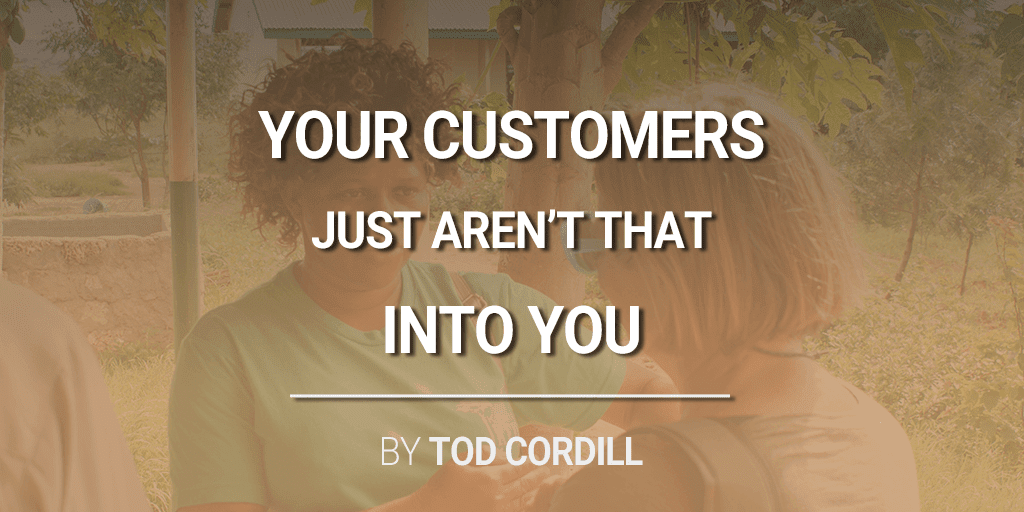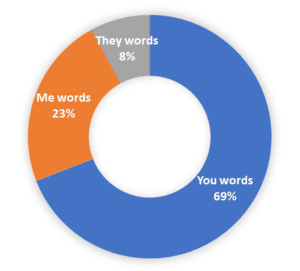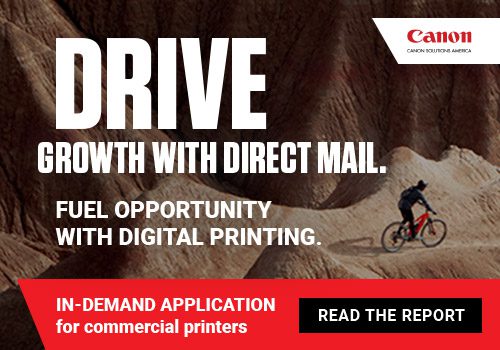
You are good at what we do. You’ve done it for a long time. You’re experts in it.
And you can talk about it all day long.
But guess what?
Your customers just don’t care.
Sure, they want you to be successful, mostly because they need your services and they want you to stick around. Also maybe because they like you. But they really don’t care about what you do and how you do it.
Your customers have their own goals and needs. They’re experts in their own processes and what they do.
Your best customers are likely doing well because they’re focused on what they do and how to get better at that. They don’t have the time to be experts on what you do for them.
You may have a problem.
How much do your website, your brochures, your social media posts, talk about all the great things you do? Do they talk about your great technology, the great quality, and your spectacular service? Maybe even how great your prices are?
If you don’t truly understand your customers, their goals, and their needs, all you can do is talk about yourself.
And people don’t want to hear all about you.
A Test
I decided to look at my own website, modernostrategies.com, and see if this was one of those occasions where the message is “do what I say, not what I do.” Many marketing agencies and service providers fall into this trap. They do great work for their clients but their own self-promotion priorities get put on the back burner.
I created three groups of words:
“You” words. These words are conversational and pull the reader into the conversation. They cause the reader to understand that you’re talking to them and what they can get out of the relationship.
“They” words. I call this category the case study words. These words are used when you talk about what has been done for customers.
“Me” words. Were talking about ourselves when we use these words. They are unavoidable, but they should be a minority and normally be matched with a you or I word. “This is what we did for them” or “this is what we can do for you”. Try to eliminate these words every chance you get.
Hopefully, your communications have a lot more “you” words than “Me” words. My hope was that this category would have the highest word count.
I downloaded the trial version of Inspyder, an SEO tool that analyzes the words on your website. I then loaded my website into the tool and downloaded a word count spreadsheet. I then tallied up the “you”, “they” and “Me” words on it found on my website.
Here’s the result.
| Word Type | Count | Example words |
| You | 1218 | you, your, yours, you’d, you’ll, yourself, you’ve |
| They | 140 | They, they’d, they’re, they’ve, them, he, his, she, her, hers |
| Me | 405 | I, I’d, my, mine, our, ours, we |

I was relieved to learn that “you” words dominate my website, but I have a feeling I can do better.
Know Your Customers
If your communications are too much about you it’s time to make a change. It can be really difficult to step back and look at your company from your customers’ perspective.
One good place to start is to create buyer personas for particular customer types. This can be difficult for commercial printers as you typically have many types of customers across various industries. A good place to start is to identify your primary contacts at your top twenty customers. If you’re trying to move into new verticals add in representative contacts at prospective companies. See if you can group them into four to six categories and create a persona for each category.
You can get a quick overview of personas from this PrintMediaCentr blog post.
How About You?
If you count the “you”, “them”, and “me” words on your website let us know what you found out in the comments below.














One Response
Great article Tod; lots of good advice.
For an ending call-to-action, what do you think about:
“Do you know” … ?
Do questions draw more attention then statements?
What other questions can you think of that, people are compelled to answer?